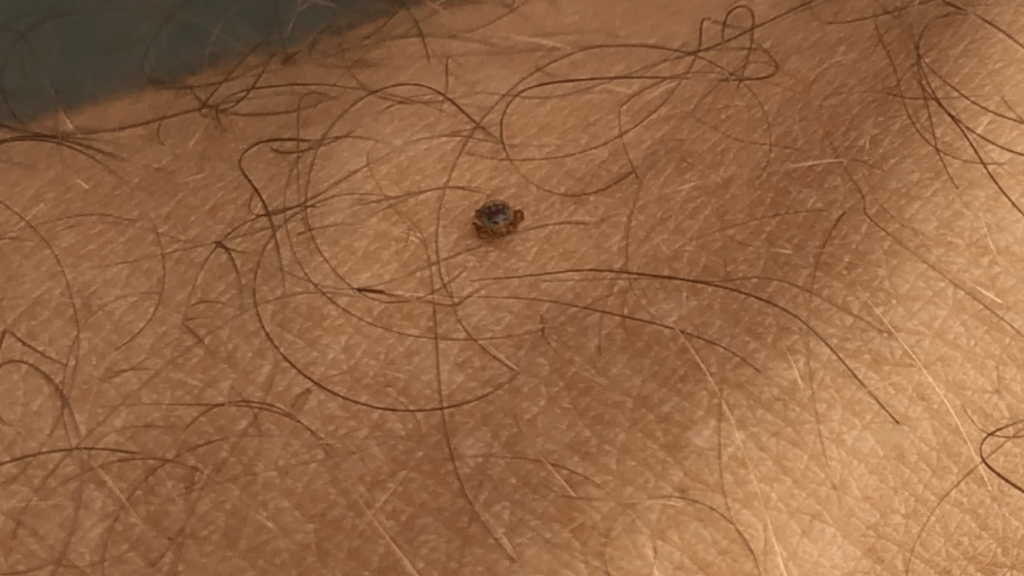Introduction
Now that the weather is starting to warm up the ticks are out and about. With higher than average global temperatures becoming a frequent norm (due to climate change), we are beginning to observe increased ranges and higher populations of the little blood suckers. With these newly expanded ranges follows infectious diseases. I will not go too into detail on how climate change and tick-borne illnesses go hand and hand or the potential implications of the two, but I will say that you do not want to contract any of the common illnesses spread by ticks. Illnesses such as Lyme disease and Alpha-gal syndrome to name a few can have relatively long term and even potentially lifelong impacts on someone’s life.
I personally am starting to get more serious about tick prevention as I do believe that ticks are worse than ever (in my lifetime) based on my own personal experience in the woods/fields while hunting and fishing. I would much rather tolerate a day or two of slight inconveniences than have to completely change my life to now be able to survive with a new disease/illness. If you are an avid outdoorsman/woman and ticks are present in your local area, I strongly encourage you to take the time, effort, and money to be proactive about your health so that you can continue to live a life that revolves around outdoor activity.
I tend to be looked at as strange or weird for the precautions I take when going into the woods, but typically this is only expressed by people who are ignorant of the potential dangers that ticks can harbor. It is not my intention to write this article to scare people about ticks, but to help inform them and keep them safe while recreating in areas with ticks. I will give you all the tricks that I know of currently to help keep ticks off of you and keep you safe during the warmer months. Follow all of my advice and I am very confident that you will leave the woods with little to no ticks on you at all. The things I do every season to help prevent encountering ticks include knowing the area I am heading into, making sure I wear the correct gear, proper footwear, proper clothing treatment, and situational awareness.
1. Know Your Area
Knowing the area you are heading into is important, especially if you are traveling from out of state or heading into a new area that you have never been before. I have been to various locations only 15-30 miles from each other which have completely different amounts of ticks or contain a completely different species of tick as the majority observed. Having a good idea of what to expect can determine if you can be a bit lax with the methods which follow this first recommendation.
It is understood that it is impossible to really grasp an idea of what the tick populations are like within an area that you have never been, but I would look at the prompt from a broader scale. Look and see what ticks are within the county and research the potential illnesses said tick(s) could potentially harbor; this will give you some idea on how to better protect yourself. If you are not confident in your knowledge of an area I would encourage you to still be proactive in looking for other signs such as the common types of habitat for ticks so that you can avoid them. It is important to figure out if a majority of the ticks you will interact with will be coming from tall grasses or from old leaves and trees. When in doubt it is best to assume that they are present in typical tick habitat.

2. Wear the Correct Materials
After you research your local environment(s), are fairly certain on what type of ticks are in the area and how they will be hiding within it, now is the time to open up your closet and decide on what you need to wear to keep yourself safe. Many avid outdoorsmen will be seen wearing long sleeve shirts/button up flannels, long pants, tightly knitted socks (usually going above the ankle), a leather belt, leather boots, and a fishing hat or something to keep the ticks off of the back of your neck. I encourage you to tuck your pants into your socks as well as your shirt into your pants.
An important thing to consider when picking out your outfits is what the weather is going to be like. If it is going to be hot and humid I can assure you that it isn’t the best choice to wear a fleece lined flannel in the middle of July or August. If you are doing any hunting or fishing in the early morning or night during early spring or late fall you should anticipate cold mornings or evenings which don’t always kill the ticks, but only slow them down until the day warms up. For this scenario it is best to wear layers that you can add on or remove as I mention in a previous blog post over the subject.
3. Consider Wearing Plastic Boots
A more intermediate tip/trick to that helped me keep the ticks off of me in some of the thickest brush I have had to walk in was the addition of plastic/neoprene boots to my wardrobe. I often can be seen wearing my Xtratuf 15 inch boots which helps me both cross shallow creeks/streams and prevent ticks from crawling on my boot and into my socks or up my pants. When hanging around areas that are rich in leaf litter such as when hunting on the ground like I do, it is crucial to have some way to keep the ticks from climbing on you while you are waiting.
I actually got this advice from my previous field ecology professor in college. I used it from there on out and have never gone back to using my 8 inch leather boots unless I am planning on hunting in fairly cold/rugged conditions. I assure you that the plastic/rubber boots are well worth the investment as they help me in so many different applications, especially when in or around tick country.
4. Treat Your Clothes
Now that I have listed out the proper, realistic attire for any climate you should now be able to avoid most ticks from biting you if you just follow the dress code. I will admit that although dressing properly does a lot for keeping the ticks from biting you, it does not prevent seed ticks from getting through small openings in your socks or keep the larger ticks from crawling up your pants or the back of your shirt. To help mitigate some of this consider treating your clothes the day before an outdoor event with permethrin, specifically the Sawyer brand which only has a concentration of 0.5 percent (specifically made for clothing) (non-affiliate link).
Permethrin is an insecticide so I encourage you to be careful when applying it to your clothes and follow the proper instructions on the back of the bottle. The spray is most dangerous when wet and should be kept away from pets and skin while it is drying. Make sure to do all of the application outside with the wind blowing away from you as to minimize potential exposure. Once your clothes are dry it should be safe to interact with. Like I mentioned previously, do read the bottle and make your own decision regarding the use of the insecticide.
This is the first year I am planning on actively treating my clothes myself as last year I witnessed someone walk through a tick nest/cluster and become covered in ticks just next to where I was walking. With the expansion of ticks and the increase in tick based insects I have determined that the risk potential with using this spray was less than the risk potential of being exposed to a tick related illness. Most of the Sawyer brand bottles only run for $14-18 (2024) online or at outdoor retail stores like REI, Dicks Sporting Goods, or Cabela’s.
5. Avoid Walking Through Thick Brush
Now that you have all the techniques that I currently use to prevent ticks in the field I would like to bring this final point back to my initial recommendation in regards to understanding your environment/surrounds. I understand that while recreating outside many of us are focused on the task at hand or enjoying the bliss of the moment. The last thing on our mind may be thinking about ticks or anything else for that matter as nature seems to bring one to focus on the present.
I do want to remind you that another great part of your tick defense tool belt is your situational awareness. I know I sound like one of those cliché self-defense instructors, but it is true. Being mindful of where you step and where you are going (when possible) can really help you prevent issues with ticks. If you can avoid walking through thick brush or an overgrown field/field edge then by all means avoid it. I try to walk paths either created by man or by deer/other animals when possible as there tends to be greater openings in brush and less ticks in my observations.
Conclusion
Now imagine that the song, “Temperature’s Rising” by Mobb Deep is playing and on every sapling in a field edge you see a group of ticks reaching out from the tips of every leaf waiting for anyone or anything to be their next meal. Don’t let those guys catch you slipping, be sure to follow the previously mentioned guidelines so that you and yours can continue to enjoy your time outside and stay in good health doing so.
As I mentioned earlier dressing differently may be a bit challenging in the summer months, but the temporary annoyance is much better than suffering long term from an illness that could have been avoided. I personally would hate to catch Lyme disease, Alpha-gal syndrome, or Rocky Mountain fever. I hope I helped some of you learn about some of the current concerns we are beginning to face and how to keep safe.
